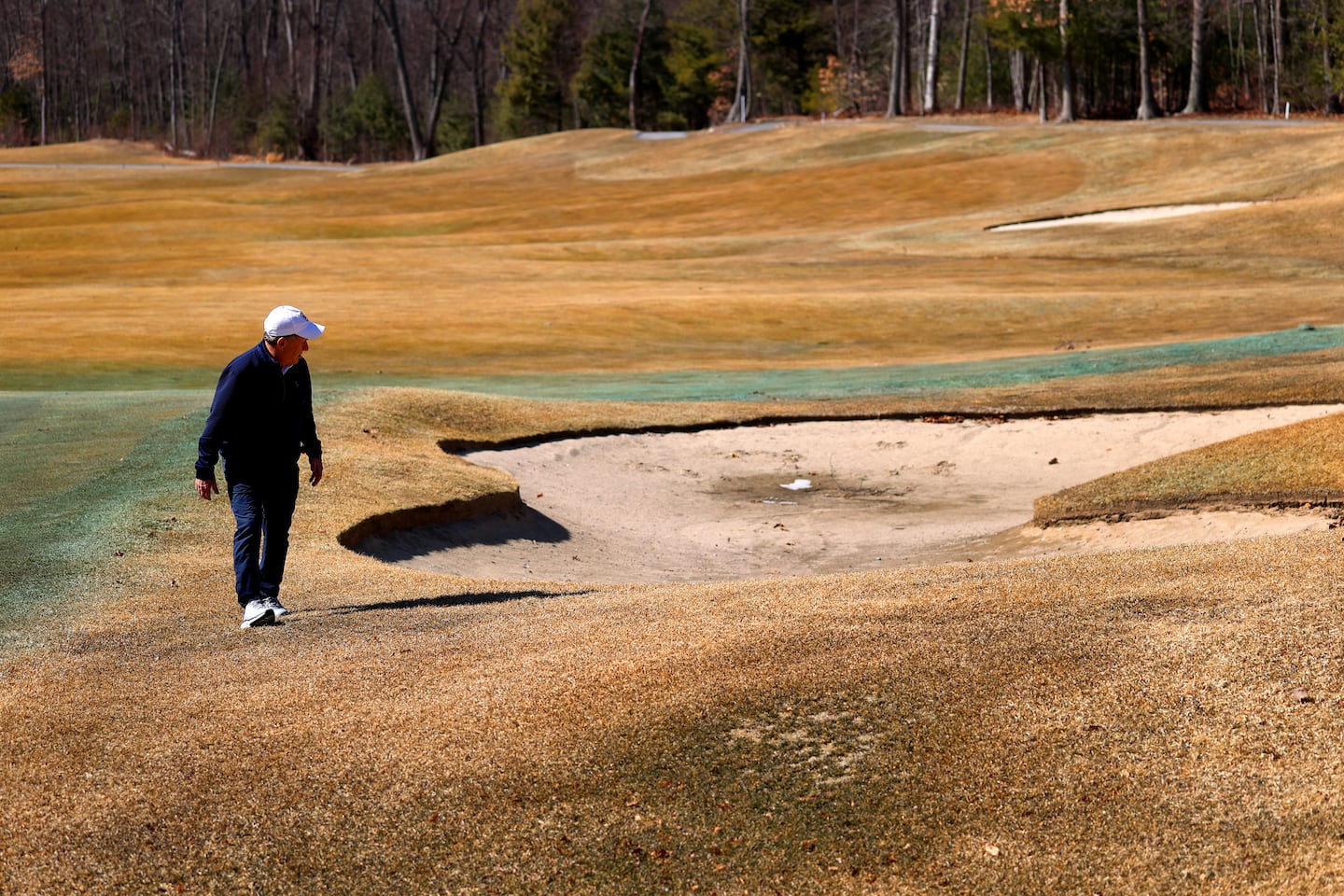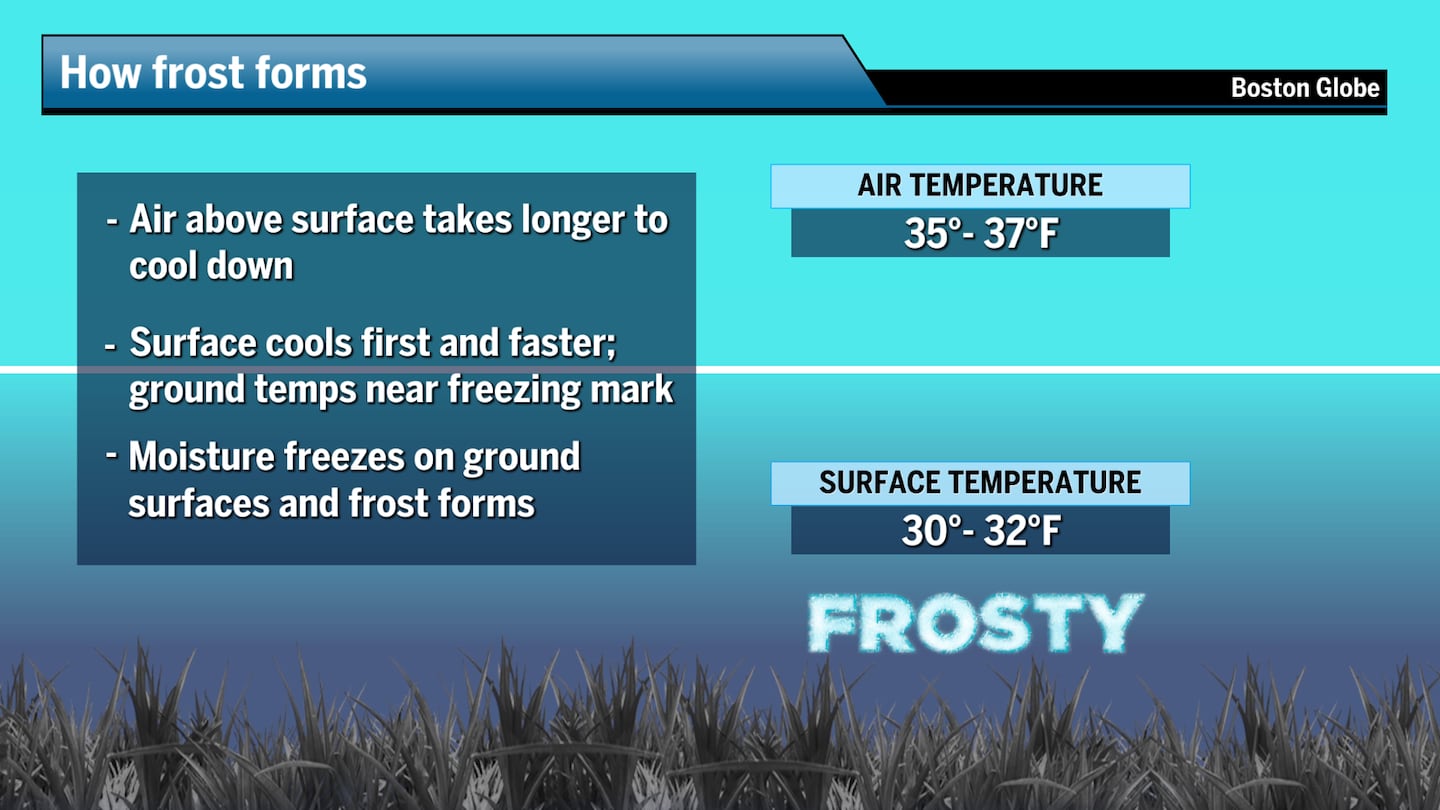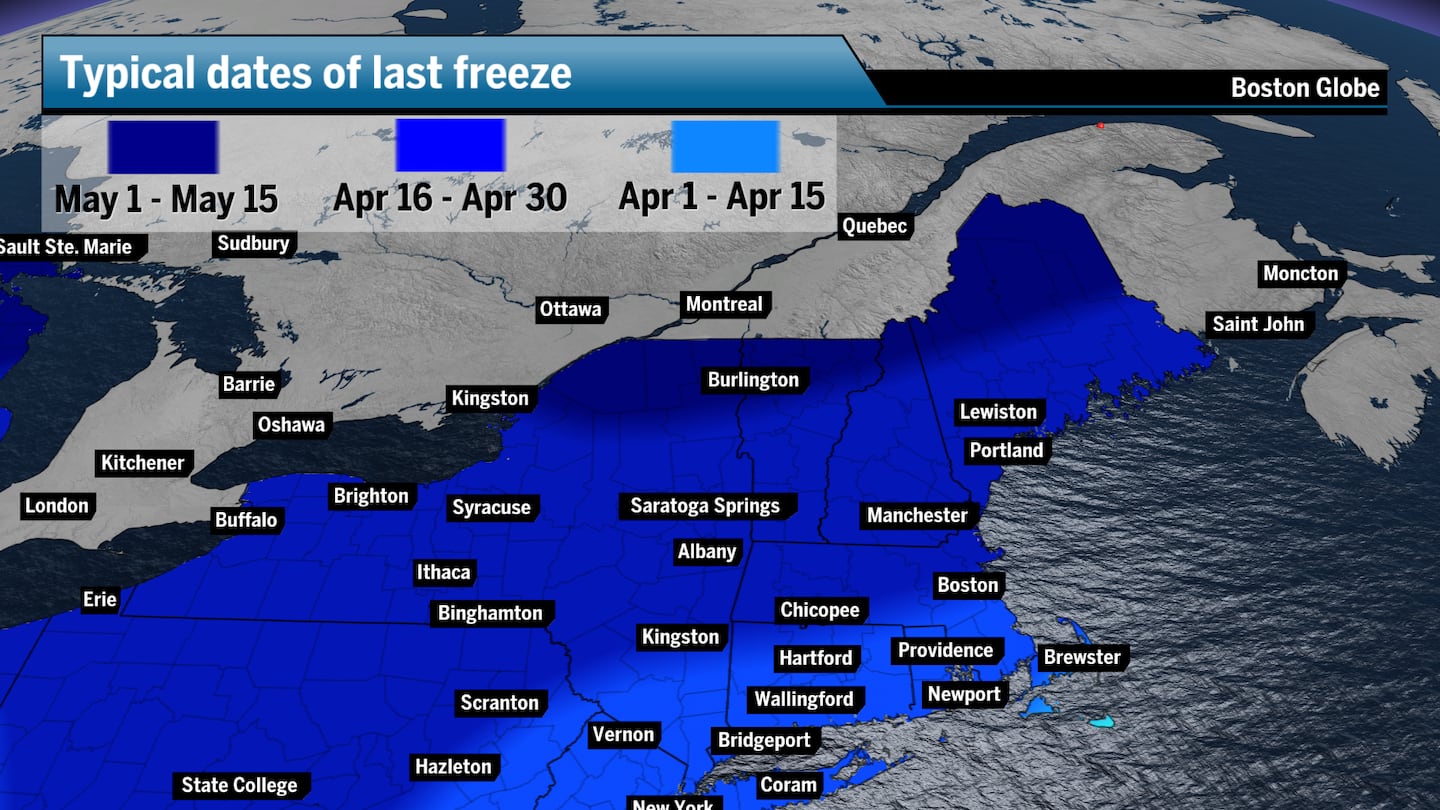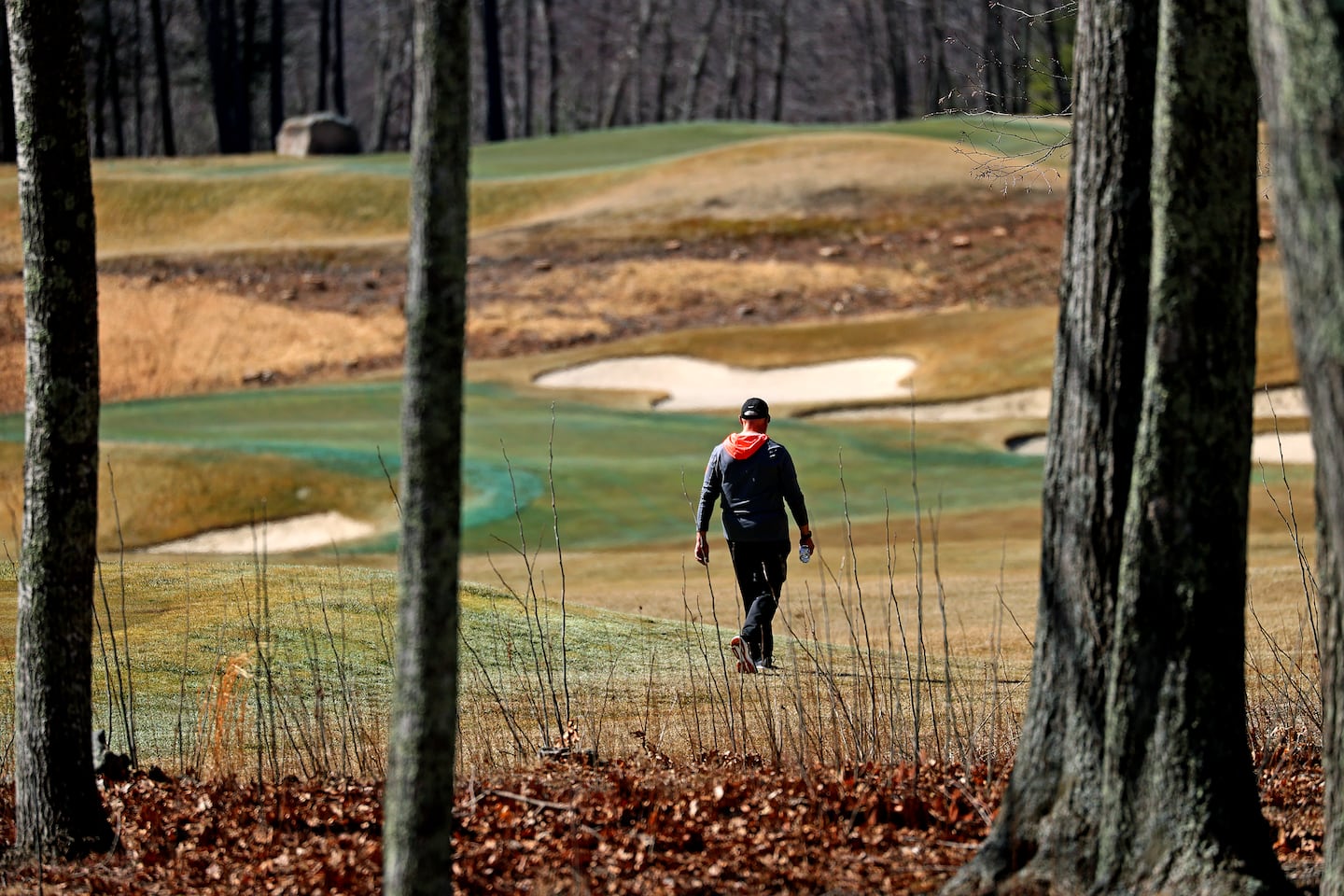 Rolling green hills surround golfers enjoying a beautiful spring evening round at the Merrimack Valley Golf Club in Methuen, Mass., in recent years.Jim Davis/Globe Staff
Rolling green hills surround golfers enjoying a beautiful spring evening round at the Merrimack Valley Golf Club in Methuen, Mass., in recent years.Jim Davis/Globe Staff
But the fairways won’t be the only thing players battle this March. The variable weather New England typically experiences in early spring can delay the date courses open and deliver its own bag of hazards, in addition to the sandtraps, water bodies, and out-of-bound markers already sprinkled throughout the course.
“There are roughly 700,000 golfers in Massachusetts alone, with growth and interest of the game booming since Covid,” said Jesse Menachem, CEO of Mass Golf in Norton, Mass.
“Many courses are eager to open in March, but weather plays an important role in doing so. Too much snowmelt or rainstorms” and other impactful weather, he added, can damage courses, forcing golfers to wait out a visit to their favorite spot.
 Golf carts are lined up and ready to go at Shining Rock Golf Club in Northbridge, Mass., on Tuesday.David L. Ryan/Globe Staff
Golf carts are lined up and ready to go at Shining Rock Golf Club in Northbridge, Mass., on Tuesday.David L. Ryan/Globe Staff
Mass Golf, an association of 360 private and public golf courses around the state, posts when courses open as well as the conditions for hundreds of courses. There are over 60 courses opening this weekend across the Bay State.
Mass Golf also tracks handicaps, or how I understand it, how good or bad at golf you are. The handicap rating is used to level the playing field between a good golfer and a bad golfer when they play against each other. The lower the handicap, the better you are. I have a high handicap, so I think it’s clear that poor weather plays to my advantage.
Spring inflicts own harsh elements on courses
Spring delivers all sorts of weather swings, making it tricky for golf courses to judge the best time to open. The increasing daylight invites more variability in our weather patterns during the spring season, which in turn opens the door to course-damaging weather hazards, such as frost, flooding, drought, and even severe thunderstorms.
“One key thing we look for is if the ground is sustainable for repeated foot or cart traffic,” said Kyle Elliott, superintendent at TPC Boston, also in Norton. “The soil during the spring doesn’t dry out the way it does in the summer…begging the question during rain and snowstorms in spring months: ‘How is the ground taking on water?’ ”
Although courses are eager to open, most understand that weather hazards can lead to yearlong damage if appropriate measures aren’t taken into consideration ahead of time. The grounds also need to be inspected after the harsh elements of winter. This past winter was mild in terms of storm intensity and snow and rain, something golf clubs would have liked to see more of to saturate the top soil come spring as the course comes to life.
 Lou Papadellis, general manager at Shining Rock Golf Club in Northbridge, Mass., checks the grounds on Tuesday. David L. Ryan/Globe Staff
Lou Papadellis, general manager at Shining Rock Golf Club in Northbridge, Mass., checks the grounds on Tuesday. David L. Ryan/Globe Staff
“Opening day is a moving target and it doesn’t stop there,” said Lou Papadellis, general manager at Shining Rock Golf Club in Northbridge, Mass. “The weather varies so much during spring. You can see extreme highs and lows with a few days into the 50s followed by nights well below freezing, which can do a number on the course…especially the greens.”
Shining Rock Golf Club, like many other courses, opens its courses as early as Friday or as late as the first week of April — and it all depends on the weather.
On the other hand, some golf courses can actually benefit from the more harmful weather. Granite Links Golf Club in Quincy sits atop a quarry with limited trees scattered throughout the course. The 27-hole course gets a good amount of wind and happily welcomes it during the spring.
“The wind helps dry out the top soil through evaporation after a rain event,” said Bobby Iannarone, co-head golf professional at Granite Links. “There are a lot of benefits from the wind, but I can see other courses with more trees having difficulty.”
 Granite Links sits atop a quarry in Quincy. Pat Greenhouse/Globe Staff
Granite Links sits atop a quarry in Quincy. Pat Greenhouse/Globe Staff
Frost can do a number on golf courses, especially the greens. And during March and April, many nights usually slip below 32 degrees, freezing any moisture within and on the surface of grass blades. The liquid expands as it forms to ice, which can rupture the blades. This can destroy the process of photosynthesis for thriving grass. If players were to step onto or swing across the frozen grass blades, they could shatter them, almost guaranteeing brown spots for the golf season ahead.
 Frost occurs when the ground temperature reaches freezing (32 degrees) and moisture freezes. With grass, moisture freezes within and on the blades.Boston Globe
Frost occurs when the ground temperature reaches freezing (32 degrees) and moisture freezes. With grass, moisture freezes within and on the blades.Boston Globe
If you’re a morning golfer, you may already know this, but be prepared to have your tee time pushed back with course maintenance crews protecting their grass. Frost delays can stretch from 15 minutes to a couple of hours, depending on how much moisture is on the ground and how far below freezing temperatures get.
“It’s real tough to assess frost at times. Our crews go out there and scout the course up to an hour and a half before tee times to make decisions on whether to delay or not,” TPC’s Elliott said.
 The typical dates of last freeze across the Northeast.Boston Globe
The typical dates of last freeze across the Northeast.Boston Globe
Golf course operators try to do their best to get you out on the course as quickly as possible.
“Everyone who is effected by a frost delay usually ends up in a shotgun start to make sure the entire day doesn’t get backed up,” Papadellis said. That could mean having players begin on separate holes simultaneously as soon as the delay is over.
Flooding, drought, and thunderstorms
With a changing climate across New England, industries are forced to adjust to new normals. Extreme weather events are increasing across New England during the spring season, which can wreak havoc on golf courses if steps for mitigation aren’t taken.
Last spring was exceptionally wet, with multiple storms leaving fairways and greens soggy and waterlogged. Many courses saw multi-day temporary closures with longstanding restrictions, such as limiting golf cart usage to designated paths only. Too much rain can also impede healthy grass growth. This spring forecast calls for near-average precipitation across New England.
On the flip side, our extended drought has been a major strain on courses striving to keep its courses looking green and lush. This adds pressure to course maintenance crews as to where they spend their water in hopes to prevent tee boxes, fairways, and greens from browning. Most of New England enters this spring under a moderate to severe drought, meaning we’ll need some consistent and persistent rainy weather to help courses avoid problems heading into summer.
In recent years, New England has seen more severe thunderstorms during April and May, increasing the concern for lightning earlier in the golf season. If there are storms looming near a golf course and lightning is detected 8 to 10 miles away, be prepared for the horn to sound alerting players to head to the clubhouse. Most courses wait 15 minutes after the last detected lightning strike to resume play.
 A golfer at the George Wright Golf Course in Hyde Park drives the ball under threatening skies after a rainstorm in April 2018.John Tlumacki/Globe Staff
A golfer at the George Wright Golf Course in Hyde Park drives the ball under threatening skies after a rainstorm in April 2018.John Tlumacki/Globe Staff
It all comes down to keeping people safe and the course in tip-top shape when weather gets in the way of the game. “Golf clubs have a job to do to protect their asset and the players ahead and during the season,” Menachem, of Mass Golf, said.
So whether heading to New Hampshire to play at Atkinson, down the South Shore to take on Crosswinds, or anywhere in between, players should be sure to check the course conditions ahead of time to see if the weather forecast will hurt or help their score. Here’s to sinking a few birdies this year, comfortably and safely.
Ken Mahan can be reached at ken.mahan@globe.com. Follow him on Instagram @kenmahantheweatherman.






